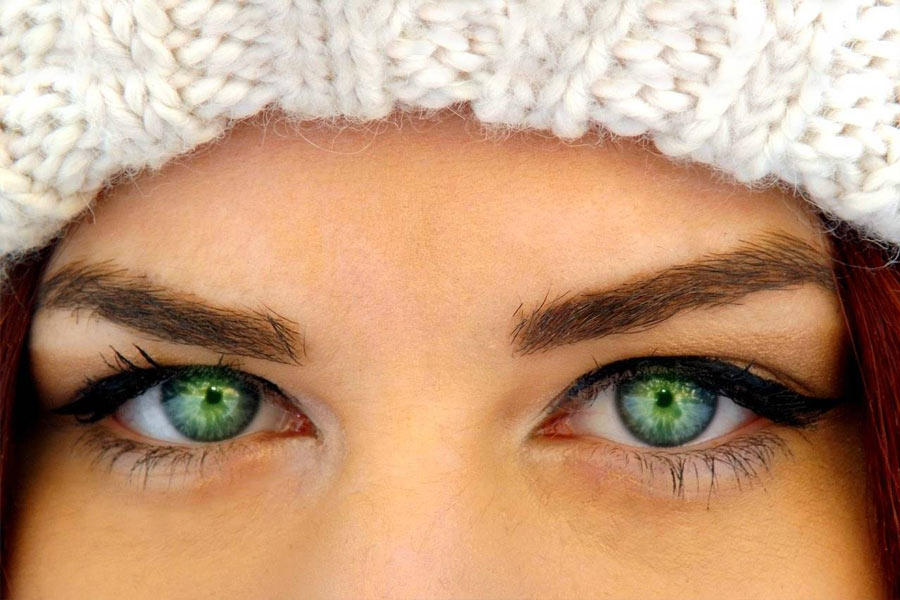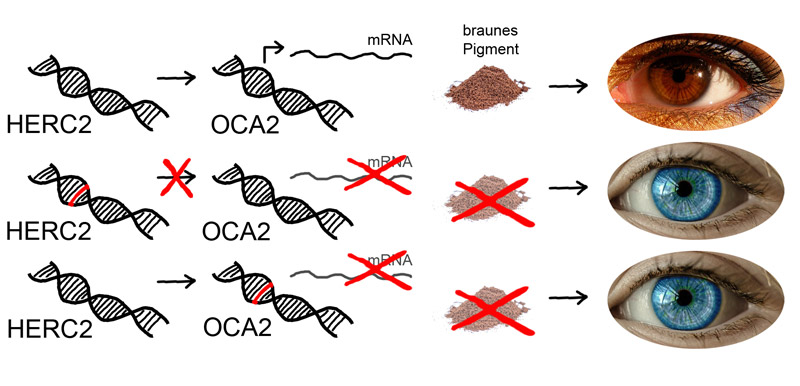
Eyes are the windows to the soul, or so some people like to think. However, it’s kind of true. Your eyes are one of the first things other people notice about you. And your eye color is one of the most prominent physical characteristics that people observe when they meet you.
A quick breakdown of eye color in the United States shows that 45% of Americans have brown eyes, 27% have blue eyes, and 18% have hazel eyes (this also includes 9% of green eyes). You probably know this has to do with genetics, but it’s time to dive into the nitty gritty to really find out.
What determines eye color?

When you talk about eye color, you’re talking about the part of the eye known as the iris. The color of your iris is related to its amount and quality of melanin, a dark brown to black pigment that naturally occurs in the body. All the different eye colors you can see are due to varying melanin levels in people’s eyes.
People with blue eyes actually lack melanin in their eyes. It is actually more accurate to describe blue eyes as “not brown”. Somehow, “Behind Not Brown Eyes” by The Who doesn’t have the same ring to it. But what’s the story behind blue eyes then?
If blue eyes don’t have any melanin, then what makes them look blue? The answer isn’t that they contain a “blue” pigment. The blue color comes from a sneaky property of light called “Rayleigh Scattering.” Rayleigh Scattering is also the reason that the sky is blue. Essentially, blue light is reflective. As a result, blue eyes reflect blue light while absorbing other colors of the spectrum, so as a result they appear blue.
Are you more likely to have brown or blue eyes?

The answer lies deep within your cells. You may know that your eye color is determined by your genes, but let’s take a closer look. There are several genetic markers that can predict the color of your iris. However, one gene, your HERC2 gene, has (at the time this article was written) the highest predictive value for blue and brown iris colors. The HERC2 gene helps code for melanin. Thus, this gene also contributes to the colors of your skin and hair.
A change in your HERC2 gene, also known as a gene variant, at a specific location in your genetic code may create a change in your melanin levels. In turn, your eye color likely reflects the variant you have. Thus, your DNA can tell you whether you may have brown eyes (a dominant trait) or blue eyes (a recessive trait).
Use Your DNA to Explore Your Eye Color
If you're a CRI Genetics customer, you can access your Photosensitivity Report in your CRI Genetics account right now and find out your own risk of photosensitivity.
Not a CRI Genetics customer yet? Go check out any current promotions and find out how you can get the Eye Color Report (and many more).